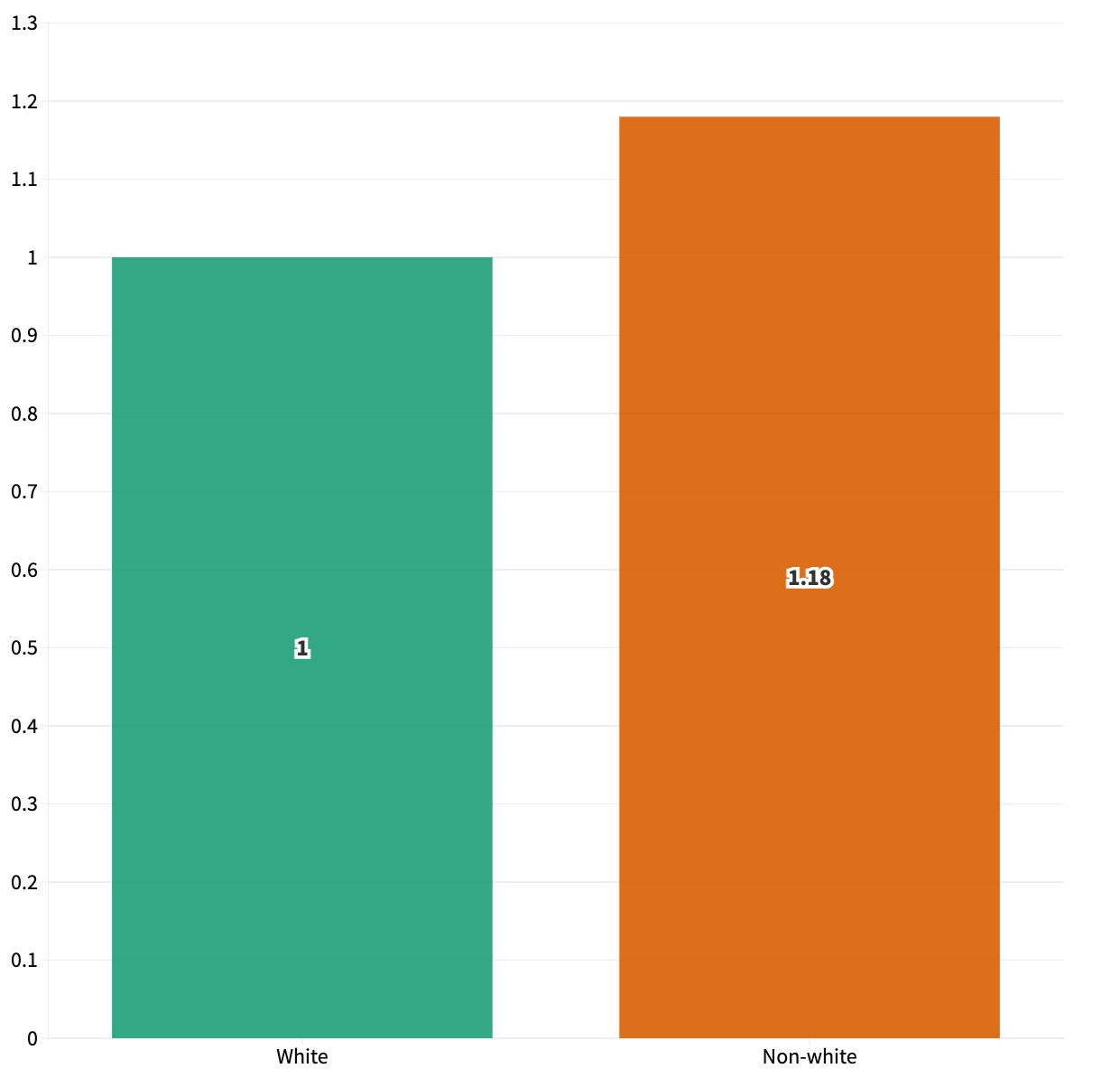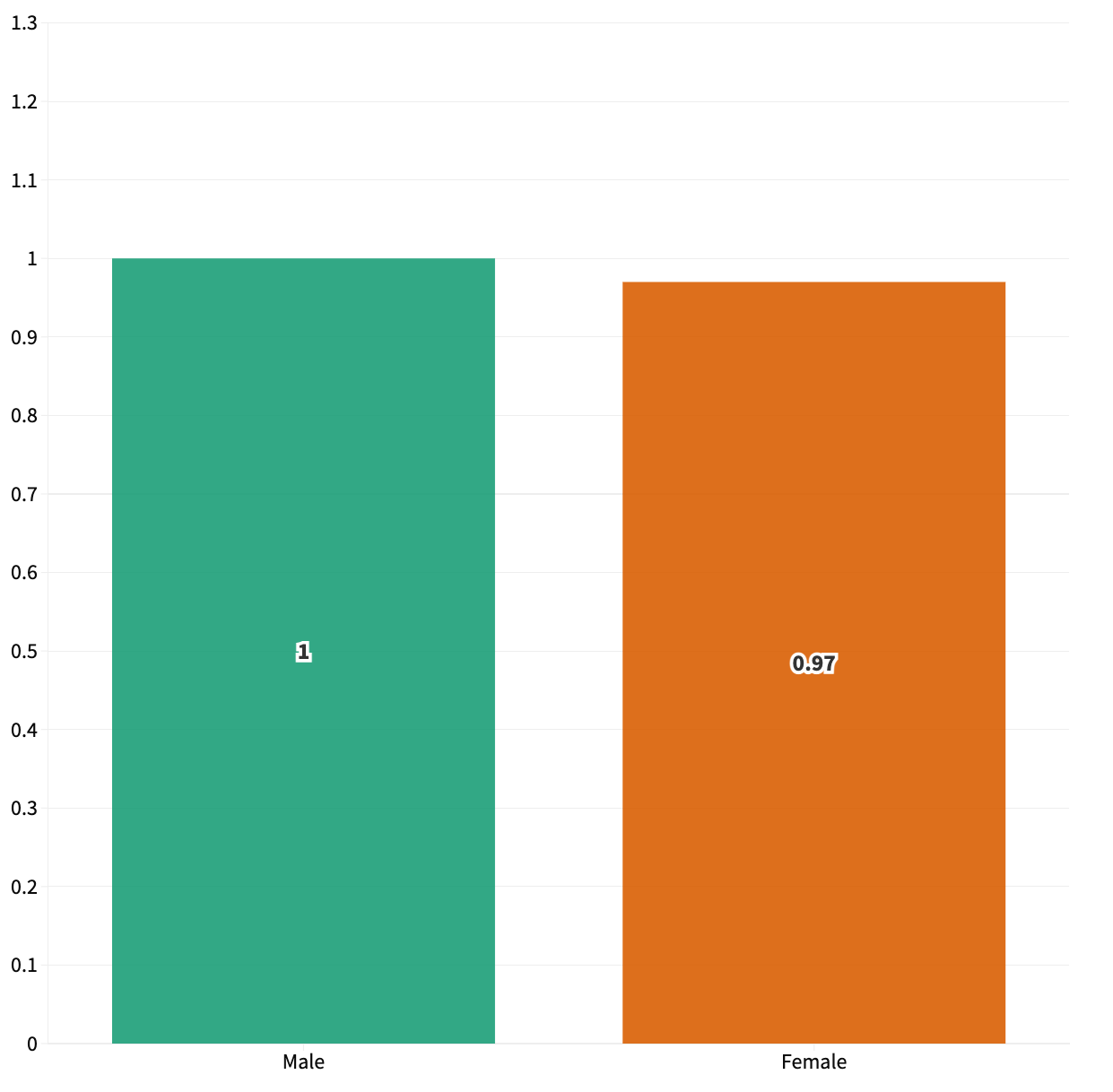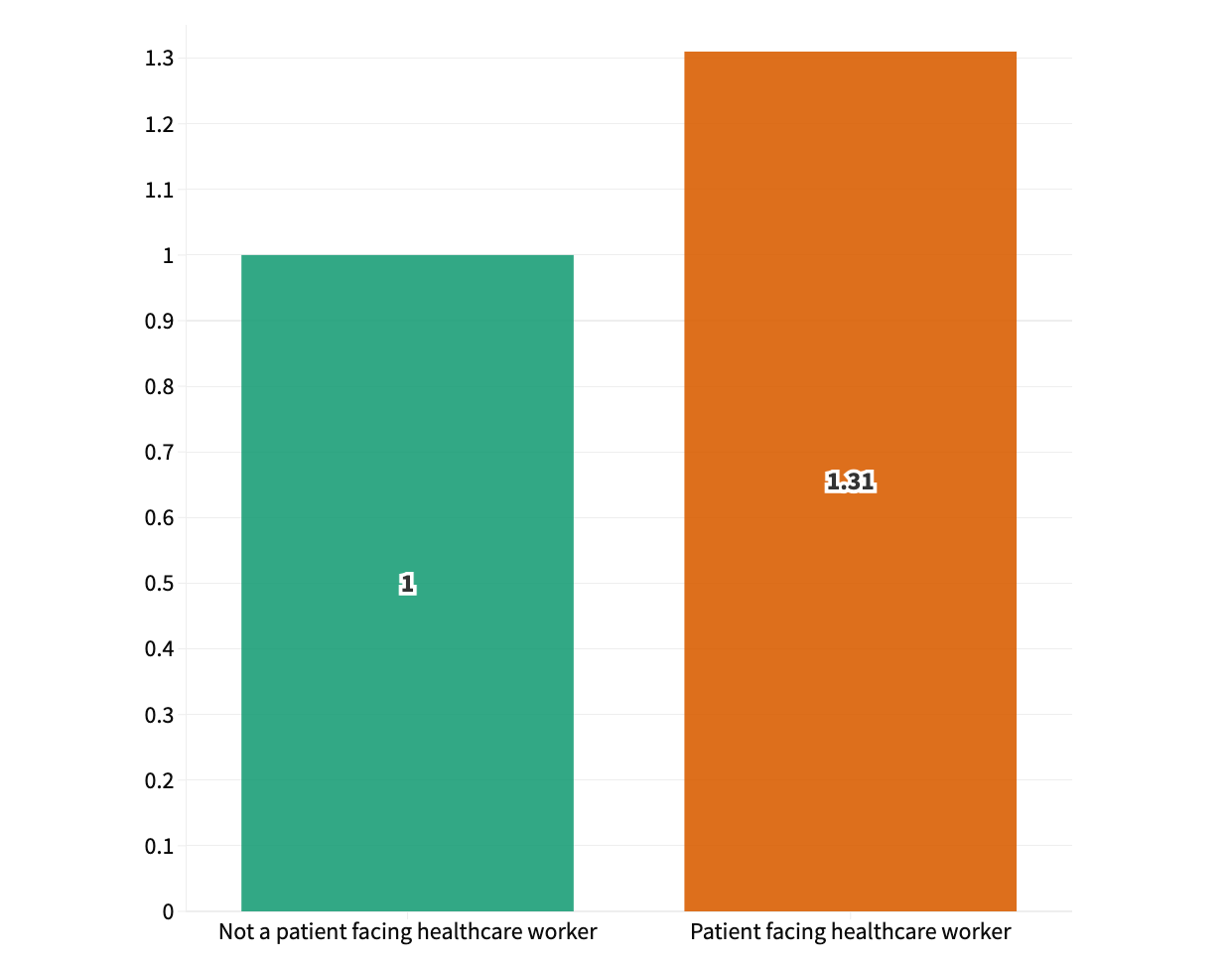Revealed: The groups who are most likely to catch Covid after being vaccinated
Young people, healthcare workers and non-white people are among those who are most likely to test positive for Covid after being vaccinated, a new study has found.
Analysis by the Office for National Statistics (ONS) found the chance of getting coronavirus after being vaccinated drops sharply 21 days following a first dose.
Just 0.5% of people who had received one dose tested positive for Covid. After two doses this number dropped to 0.07%.
The chart below shows the rate of infection falling after having a vaccine.

For the people who did test positive after vaccination, the study found they were less likely to have a high viral load or develop symptoms.
The ONS study used a 'hazard ratio' to compare the risk of a Covid infection occurring in two different groups at a given time. Someone with a high hazard ratio is more likely to see the hazard happen to them.
These are the factors that influence how likely a person is to test positive after being vaccinated:
Age

The study found age was the biggest factor for a person's chances of getting infected with Covid after vaccination, with the younger people more likely to get infected.
People aged 20 more than twice as likely to catch Covid than people aged 80 after being vaccinated.
Household size

The larger a person's household, the higher their chance of testing positive after vaccination.
The study found people living in a household of one had a hazard ratio of 1, which steadily increased to 1.49 for people living in households of five or more people.
Ethnicity

The study found non-white people were more likely to catch Covid than white people.
White people had a hazard ratio of 1 while non-white people had a hazard ratio of 1.18.
Gender

The ONS found gender did not play much of a role in the likelihood of catching Covid after getting vaccinated with only a 0.03 difference between males and females.
Men were slightly higher at a hazard ratio of 1 compared to women's hazard ratio of 0.97.
Healthcare workers

A significant factor in increasing the chance of catching Covid after getting vaccinated was if the person was a patient-facing healthcare worker.
As might be expected, someone who worked with patients hazard ratio was higher (1.31) than those who did not (1).
Prof Kevin McConway, Emeritus Professor of Applied Statistics, The Open University, said: “In the analysis of characteristics of people who tested positive after vaccination, the groups who were more likely to be infected after vaccination mostly correspond to the groups who would be more likely to be infected even if they weren’t vaccinated – people working in patient-facing health care and in care homes, those living in larger households, in areas of higher deprivation, and in rural villages rather than large urban areas.
"None of that is very surprising, I think.
"Generally, there’s quite a strong effect of age, with younger people showing a considerably higher risk of infection after vaccination than older people."

Vaccine take-up among all age groups continues to be high in England, with over 90% of people aged over 70 getting their second jab.
Ethnicity continues to play a large part in vaccine take-up, with 94.1% of eligible white people under the age of 50 getting the first jab compared to 68.4% of black people of African, Caribbean or British descent.

The figures are similar for those under the age of 50 when it comes to second doses, with 89.2% of white people getting their second jab compared to 56.6% of black people of African, Caribbean or British descent.
By the end of the week all adults in England will be eligible to get a Covid-19 vaccine, and the government has set a target for vaccinating every person over the age of 18 by 19 July.


